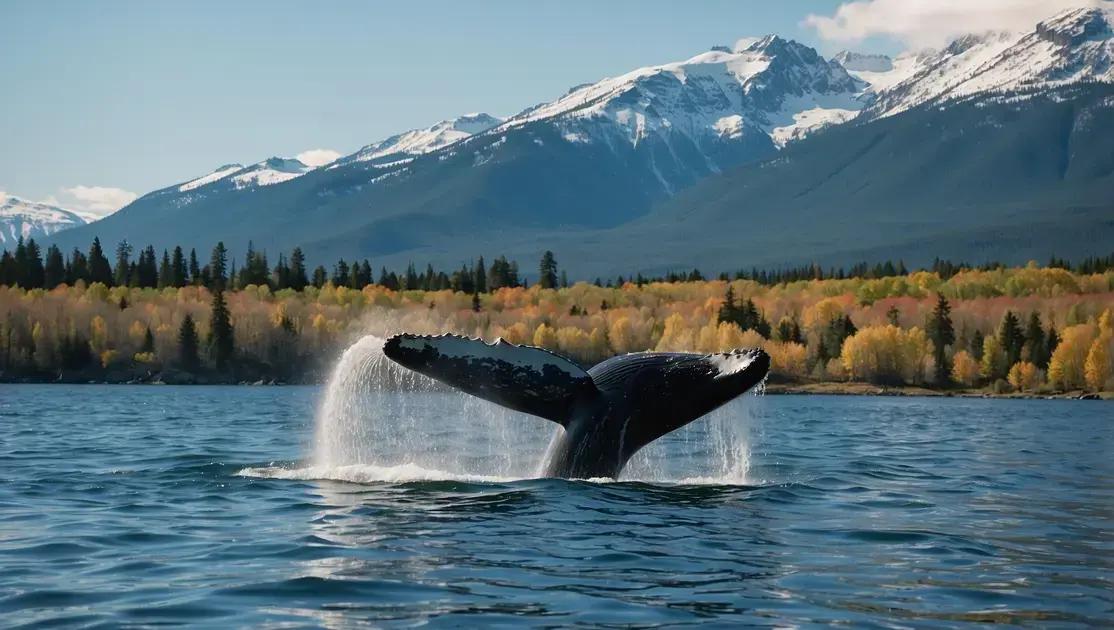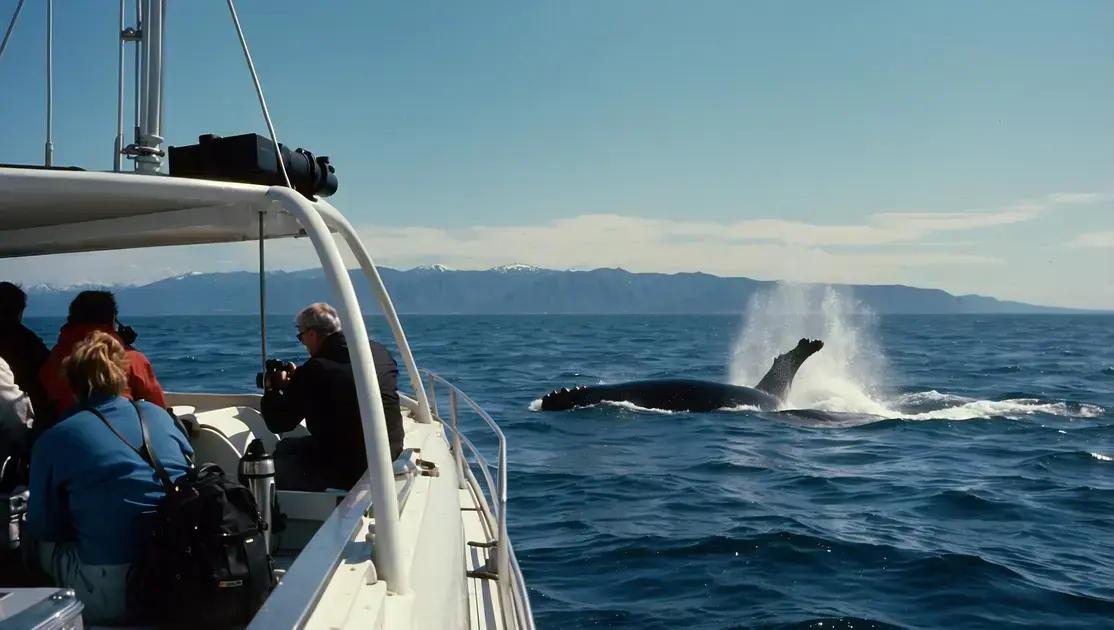Whale watching in Canada provides thrilling experiences to see majestic marine life. The best seasons are spring through fall, with top destinations including Vancouver Island and the Bay of Fundy. Prepare well and choose the right tour to create unforgettable memories while contributing to wildlife conservation.
Whale watching Canada is not just a pastime; it's a captivating adventure that allows you to witness the majesty of these ocean giants in their natural habitat. With stunning coastlines and diverse marine life, Canada is home to some of the best whale watching spots in the world. In this article, we'll guide you through the top destinations, the best seasons for whale watching, and tips to make your experience unforgettable.
Top Destinations for Whale Watching in Canada
Canada is home to some of the most spectacular whale watching destinations in the world. Whether you prefer the rugged coastlines of the Pacific or the serene beauty of the Atlantic, there's a spot for everyone. Here are the top locations that promise an unforgettable experience.
1. Vancouver Island, British Columbia
Vancouver Island is widely regarded as one of the best places for whale watching in Canada. The waters around the island are rich in marine life, making it ideal for seeing orcas, humpback whales, and gray whales. Take a tour from Victoria or Tofino to experience the beauty of the coastline while spotting these magnificent animals.
2. Bay of Fundy, New Brunswick/Nova Scotia
The Bay of Fundy boasts the highest tides in the world and is an incredible spot for whale watching. It is famous for its population of humpback and minke whales during the summer months. The picturesque setting combined with rich marine biodiversity makes it a must-visit destination.
3. Saguenay–St. Lawrence Marine Park, Quebec
This unique marine park offers visitors a chance to spot beluga whales, known for their distinctive color and vocalizations. The St. Lawrence River is home to many whale species, making it an exceptional location for nature lovers. Guided boat tours provide up-close encounters with these gentle giants.
4. Quebec's Tadoussac
Tadoussac is another prime location for whale watching. Situated at the confluence of the Saguenay and St. Lawrence rivers, it's famous for its diverse whale population, including blue whales and belugas. The stunning scenery and ample tour options make it a popular choice for tourists.
Best Seasons for Whale Watching in Canada

Understanding the best seasons for whale watching in Canada is crucial for an amazing experience. Different species of whales are more visible during specific times of the year, and planning your trip accordingly can enhance your chances of spotting these magnificent creatures.
Spring (April to June)
Spring is one of the best times to observe gray whales as they migrate north to their feeding grounds. This period offers a unique opportunity to catch sight of these whales as they travel along the west coast of Canada.
Summer (July to September)
Summer is peak whale watching season in Canada. During these months, humpback whales, minke whales, and orcas are abundant, especially around Vancouver Island and the Bay of Fundy. The warm weather also allows for comfortable boat tours, enhancing your overall experience.
Fall (October to November)
Fall is another excellent time for whale watching in Canada, particularly along the Atlantic coast. Many species begin to migrate south, and you may encounter humpback and minke whales as they leave for warmer waters.
Winter (December to March)
While winter is generally less active, it's a great time to witness beluga whales in certain areas, especially in Hudson Bay. The unique winter scenery adds a different charm to the adventure, making it a worthwhile experience for dedicated whale watchers.
What to Expect During Your Whale Watching Tour
When you embark on a whale watching tour in Canada, several exciting experiences await you. Knowing what to expect can enhance your adventure and make it more enjoyable.
Preparation for the Tour
Before the tour, it's essential to check the weather and dress appropriately. Wearing layers is recommended, as it can be cooler in the water. Sunscreen and a hat are also advisable for sunny days. Don't forget your camera to capture incredible moments!
Spotting Whales
During the tour, keep your eyes peeled as the boat moves through the water. Guides typically share information on whale behavior and where to look for them. You might learn about different whale species, their feeding habits, and migration patterns. Patience is key, as sometimes it may take time before you spot a whale.
Experience the Environment
While you're searching for whales, take in the beautiful surroundings. The scenic coastlines, stunning landscapes, and diverse marine life contribute to a memorable experience. You may encounter dolphins, sea lions, and various seabirds along the way.
Conservation Awareness
Many whale watching tours emphasize the importance of conservation. Guides often educate participants about the challenges whales face due to human activities. Understanding these issues can deepen your appreciation for these magnificent creatures and help promote their protection.
Tips for a Successful Whale Watching Experience

To ensure you have a successful whale watching experience, consider following these practical tips. Each point will help enhance your adventure and make it more enjoyable.
1. Choose the Right Tour
Research various whale watching tour operators. Look for reviews and recommendations to choose a reputable company. Tours that focus on environmental education often provide well-trained guides who enhance your understanding of the whales.
2. Dress Comfortably
Wear comfortable clothing and dress in layers. Temperatures can change quickly at sea, so being prepared for both warm and cool conditions is important. Closed-toe shoes with good grip are recommended for safety.
3. Arrive Early
Plan to arrive early to your tour departure point. This ensures you have time to check in and gives you the chance to ask the crew any questions you may have before the trip begins.
4. Bring Essential Gear
Pack essentials like binoculars for close-up viewing, a camera to capture the moment, and sunscreen to protect yourself from UV rays. Don't forget to also bring snacks and water to stay energized during your tour.
5. Follow Instructions
Listen to your guides and follow their instructions closely. They will provide valuable safety information and tips on how to best view the whales without disturbing them. This will help you get the most out of your experience.
Experience the Wonders of Whale Watching in Canada
Whale watching in Canada offers an exciting adventure full of beauty and discovery. From the majestic whales to the stunning coastal views, each tour is unique and memorable.
By knowing the best seasons to visit and understanding what to expect on your tour, you can greatly enhance your experience. Remember to prepare well, choose the right tour, and follow the expert advice of your guides.
Your journey to witness these incredible marine creatures is not just about seeing whales; it's also about appreciating nature and the importance of conservation. So grab your camera, head to one of Canada's beautiful whale watching spots, and create unforgettable memories!


